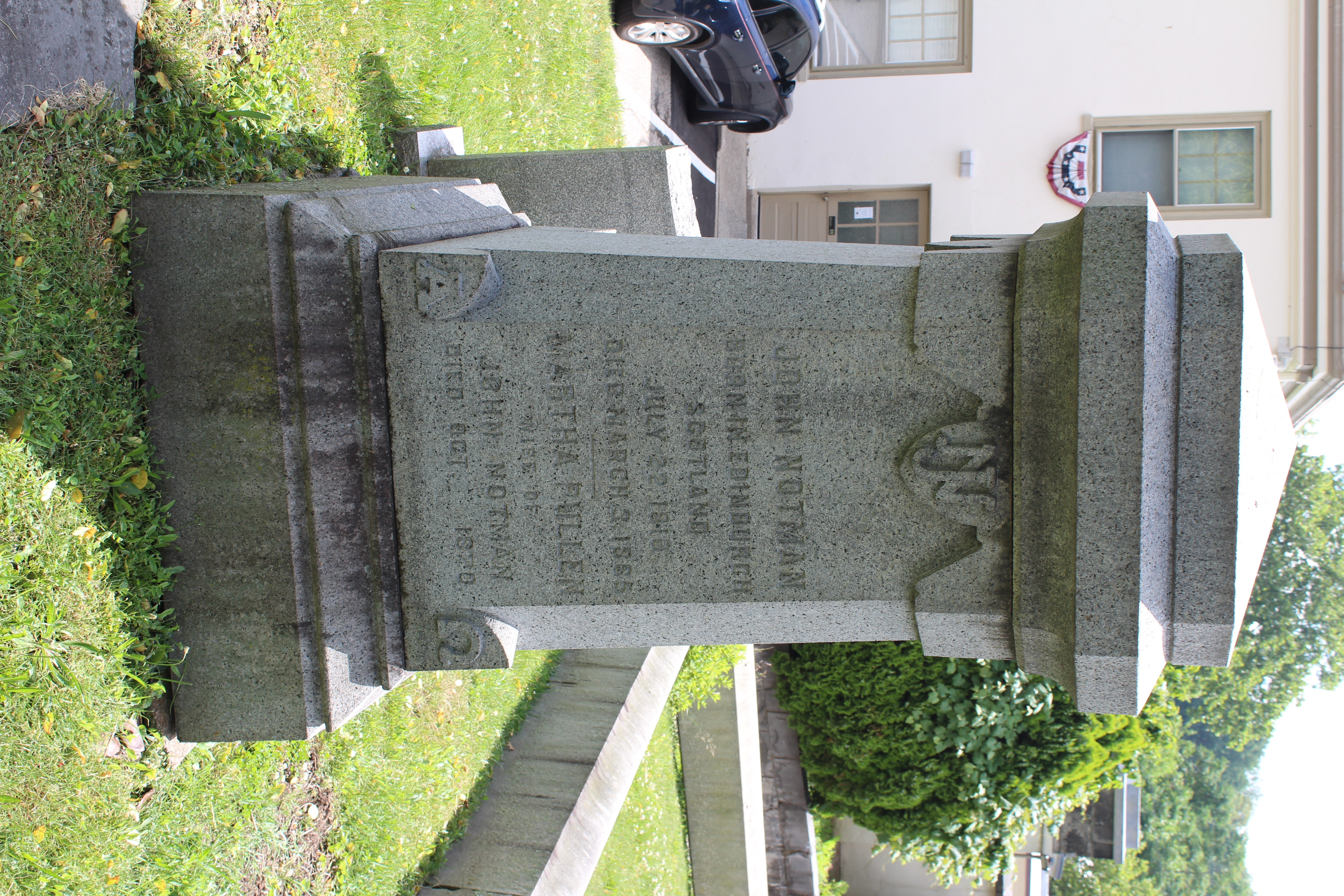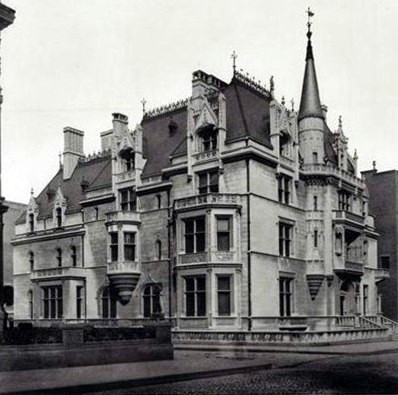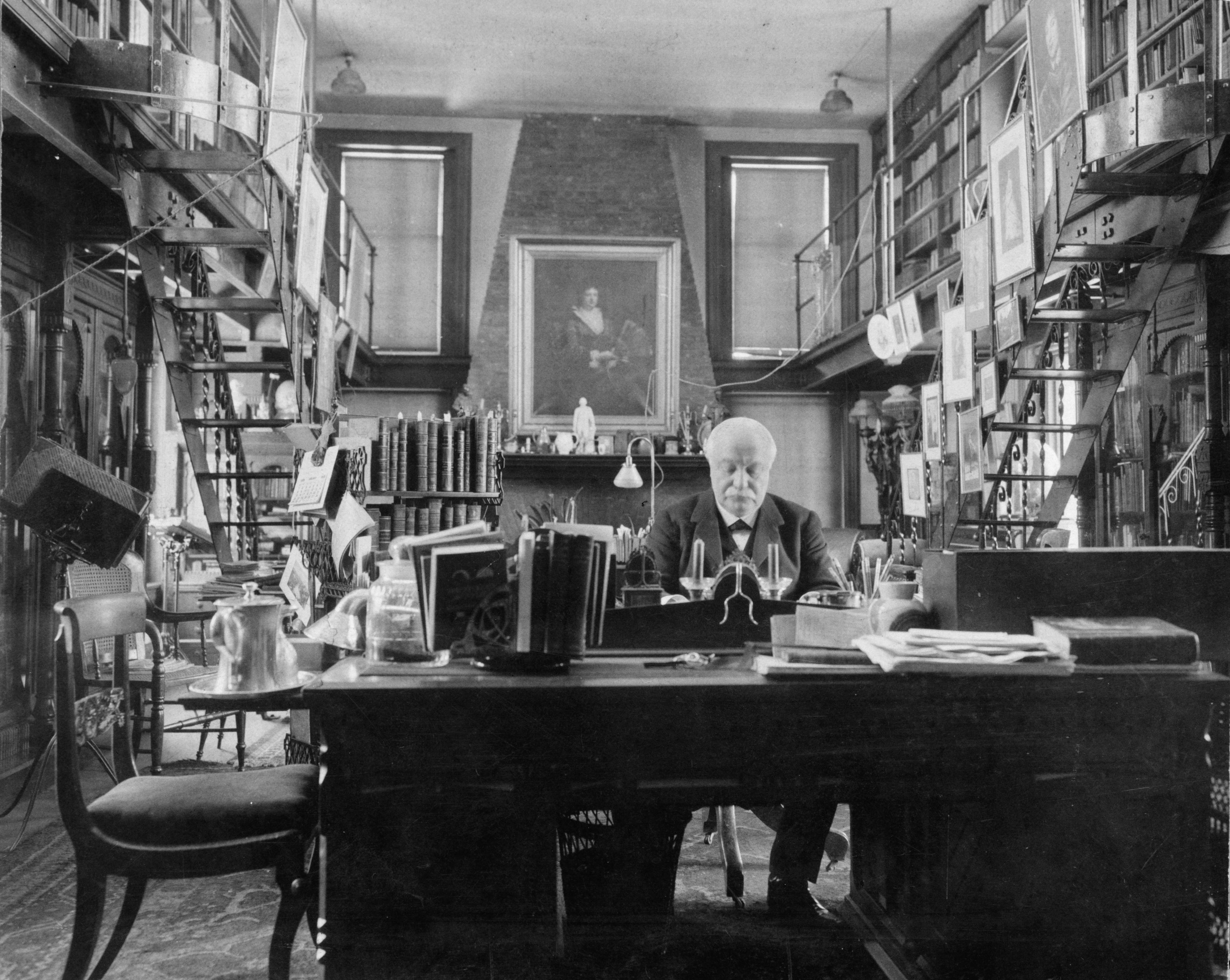|
Frank Furness
Frank Heyling Furness (November 12, 1839 - June 27, 1912) was an American architect of the Victorian era. He designed more than 600 buildings, most in the Philadelphia area, and is remembered for his diverse, muscular, often unordinarily scaled buildings, and for his influence on the Chicago architect Louis Sullivan. Furness also received a Medal of Honor for bravery during the Civil War. Toward the end of his life, his bold style fell out of fashion, and many of his significant works were demolished in the 20th century. Among his most important surviving buildings are the University of Pennsylvania Library (now the Fisher Fine Arts Library), the Pennsylvania Academy of the Fine Arts, and the First Unitarian Church of Philadelphia, all in Philadelphia, Pennsylvania, and the Baldwin School Residence Hall in Bryn Mawr. Biography Furness was born in Philadelphia on November 12, 1839. His father, William Henry Furness, was a prominent Unitarian minister and abolitionist, and ... [...More Info...] [...Related Items...] OR: [Wikipedia] [Google] [Baidu] |
Philadelphia
Philadelphia, often called Philly, is the List of municipalities in Pennsylvania#Municipalities, largest city in the Commonwealth (U.S. state), Commonwealth of Pennsylvania, the List of United States cities by population, sixth-largest city in the U.S., the second-largest city in both the Northeast megalopolis and Mid-Atlantic (United States), Mid-Atlantic regions after New York City. Act of Consolidation, 1854, Since 1854, the city has been coextensive with Philadelphia County, Pennsylvania, Philadelphia County, the List of counties in Pennsylvania, most populous county in Pennsylvania and the urban core of the Delaware Valley, the Metropolitan statistical area, nation's seventh-largest and one of List of largest cities, world's largest metropolitan regions, with 6.245 million residents . The city's population at the 2020 United States census, 2020 census was 1,603,797, and over 56 million people live within of Philadelphia. Philadelphia was founded in 1682 by William Penn, ... [...More Info...] [...Related Items...] OR: [Wikipedia] [Google] [Baidu] |
First Unitarian Church Of Philadelphia
The First Unitarian Church of Philadelphia is a Unitarian Universalist congregation located at 2125 Chestnut Street in Philadelphia, Pennsylvania. As a regional Community Center it sponsors cultural, educational, civic, wellness and spiritual activities. On June 12, 1796, twenty of Philadelphia's intellectual leaders formed the First Unitarian Society of Philadelphia, becoming the first continuously functioning church in the country to name itself "Unitarian". The founders were directed and encouraged by the Unitarian minister Joseph Priestley, and its first settled minister was the Rev. Dr. William Henry Furness. William Henry Furness The small but growing congregation was lay-led until 1825, when Rev. Dr. William Henry Furness was persuaded to serve as the first minister at the age of 22. Starting in the 1830s, Furness became one of the few abolitionist ministers in the city, known for his anti-slave sermons and Underground Railroad activities. His speeches were so impassi ... [...More Info...] [...Related Items...] OR: [Wikipedia] [Google] [Baidu] |
John Notman
John Notman (22 July 18103 March 1865) was a Scottish-born American architect, who settled in Philadelphia. He is remembered for his churches, and for popularizing the Italianate style and the use of brownstone. Career Notman was born on 22 July 1810 at Fernieside on the south edge of Edinburgh in Scotland. He was the son of David Notman, a mason and builder. He was educated at the Watt Institution in Edinburgh. Around 1824 Notman joined his older cousin, William Notman to train as an architect in the office of William Henry Playfair in Edinburgh prior to emigrating to the United States in 1831. He eventually settled in Philadelphia, where one of his first commissions was Laurel Hill Cemetery in 1835. He later opened and operated a successful firm until his death in 1865. Notman was also a founding member of the American Institute of Architects and was committed to establishing professionalism in the practice of architecture in the United States. Notman is credited with in ... [...More Info...] [...Related Items...] OR: [Wikipedia] [Google] [Baidu] |
Unitarian Church At Germantown, Philadelphia, By Newell, R
Unitarian or Unitarianism may refer to: Christian and Christian-derived theologies A Unitarian is a follower of, or a member of an organisation that follows, any of several theologies referred to as Unitarianism: * Unitarianism (1565–present), a liberal Christian theological movement known for its belief in the unitary nature of God, and for its rejection of the doctrines of the Trinity, original sin, predestination, and of biblical inerrancy * Unitarian Universalism (often referring to themselves as "UUs" or "Unitarians"), a primarily North American liberal pluralistic religious movement that grew out of Unitarianism * In everyday British usage, "Unitarian" refers to the organisation formally known as the General Assembly of Unitarian and Free Christian Churches, which holds beliefs similar to Unitarian Universalists * International Council of Unitarians and Universalists, an umbrella organization * American Unitarian Association, a religious denomination in the United State ... [...More Info...] [...Related Items...] OR: [Wikipedia] [Google] [Baidu] |
John Ruskin
John Ruskin (8 February 1819 20 January 1900) was an English writer, philosopher, art critic and polymath of the Victorian era. He wrote on subjects as varied as geology, architecture, myth, ornithology, literature, education, botany and political economy. Ruskin's writing styles and literary forms were equally varied. He wrote essays and treatises, poetry and lectures, travel guides and manuals, letters and even a fairy tale. He also made detailed sketches and paintings of rocks, plants, birds, landscapes, architectural structures and ornamentation. The elaborate style that characterised his earliest writing on art gave way in time to plainer language designed to communicate his ideas more effectively. In all of his writing, he emphasised the connections between nature, art and society. Ruskin was hugely influential in the latter half of the 19th century and up to the First World War. After a period of relative decline, his reputation has steadily improved since the 1960 ... [...More Info...] [...Related Items...] OR: [Wikipedia] [Google] [Baidu] |
Richard Morris Hunt
Richard Morris Hunt (October 31, 1827 – July 31, 1895) was an American architect of the nineteenth century and an eminent figure in the history of American architecture. He helped shape New York City with his designs for the 1902 entrance façade and Great Hall of the Metropolitan Museum of Art, the pedestal of the Statue of Liberty (''Liberty Enlightening the World''), and many Fifth Avenue mansions since destroyed. Hunt is also renowned for his Biltmore Estate, America's largest private house, near Asheville, North Carolina, and for his elaborate summer cottages in Newport, Rhode Island, which set a new standard of ostentation for the social elite and the newly minted millionaires of the Gilded Age. Early life Hunt was born at Brattleboro, Vermont into the prominent Hunt family. His father, Jonathan Hunt, was a lawyer and U.S. congressman, whose own father, Jonathan Hunt, senior, was lieutenant governor of Vermont. Hunt's mother, Jane Maria Leavitt, was the daughter o ... [...More Info...] [...Related Items...] OR: [Wikipedia] [Google] [Baidu] |
École Des Beaux-Arts
École des Beaux-Arts (; ) refers to a number of influential art schools in France. The term is associated with the Beaux-Arts style in architecture and city planning that thrived in France and other countries during the late nineteenth century and the first quarter of the twentieth century. The most famous and oldest École des Beaux-Arts is the École nationale supérieure des Beaux-Arts in Paris, now located on the city's left bank across from the Louvre, at 14 rue Bonaparte (in the 6th arrondissement). The school has a history spanning more than 350 years, training many of the great artists in Europe. Beaux-Arts style was modeled on classical " antiquities", preserving these idealized forms and passing the style on to future generations. History The origins of the Paris school go back to 1648, when the Académie des Beaux-Arts was founded by Cardinal Mazarin to educate the most talented students in drawing, painting, sculpture, engraving, architecture and other medi ... [...More Info...] [...Related Items...] OR: [Wikipedia] [Google] [Baidu] |
John Fraser (architect)
John Fraser (October 18, 1825 – December 26, 1906) was a Scottish-born American architect who practiced in Philadelphia, Pennsylvania and Washington, D.C. His most significant surviving building is the Union League of Philadelphia (1864–65), a High Victorian, Second Empire gentlemen's club constructed of brick and brownstone. His career is overshadowed by that of his former student and one-time partner, Frank Furness (Fraser, Furness & Hewitt: 1867-71), whose influence is visible in Fraser's Washington, D.C. mansions for James G. Blaine and John T. Brodhead. He served as acting supervisory architect for the U.S. Treasury (December 1878 - May 1879), created a master plan for the U.S. Capitol grounds, and served on the commission to complete Robert Mills's Washington Monument. He was one of the founders of the Philadelphia chapter of the American Institute of Architects. He maintained a residence in Riverton, New Jersey, and designed a number of buildings there. By 188 ... [...More Info...] [...Related Items...] OR: [Wikipedia] [Google] [Baidu] |
Horace Howard Furness
Horace Howard Furness (November 2, 1833 – August 13, 1912) was an American Shakespearean scholar of the 19th century. Life and career Horace Furness was the son of the Unitarian minister and abolitionist William Henry Furness (1802–1896), and brother of the architect Frank Furness (1839–1912). He graduated from Harvard University in 1854, embarked on a journey to Europe with Atherton Blight, and then studied in Germany. After returning to the United States, he was admitted to the Philadelphia Bar in 1858, but his growing deafness interfered with the practice of law. In 1860, he joined the Shakspere Society of Philadelphia, an amateur study group that took its scholarship seriously. As he later wrote: Every member had a copy of the Variorum of 1821, which we fondly believed had gathered under each play all Shakespearian lore worth preserving down to that date. What had been added since that year was scattered in many different editions, and in numberless volumes dispe ... [...More Info...] [...Related Items...] OR: [Wikipedia] [Google] [Baidu] |
Abolitionism In The United States
In the United States, abolitionism, the movement that sought to end slavery in the country, was active from the late colonial era until the American Civil War, the end of which brought about the abolition of American slavery through the Thirteenth Amendment to the United States Constitution (ratified 1865). The anti-slavery movement originated during the Age of Enlightenment, focused on ending the trans- Atlantic slave trade. In Colonial America, a few German Quakers issued the 1688 Germantown Quaker Petition Against Slavery, which marks the beginning of the American abolitionist movement. Before the Revolutionary War, evangelical colonists were the primary advocates for the opposition to slavery and the slave trade, doing so on humanitarian grounds. James Oglethorpe, the founder of the colony of Georgia, originally tried to prohibit slavery upon its founding, a decision that was eventually reversed. During the Revolutionary era, all states abolished the international sl ... [...More Info...] [...Related Items...] OR: [Wikipedia] [Google] [Baidu] |
Unitarianism
Unitarianism (from Latin ''unitas'' "unity, oneness", from ''unus'' "one") is a nontrinitarian branch of Christian theology. Most other branches of Christianity and the major Churches accept the doctrine of the Trinity which states that there is one God who exists in three coequal, coeternal, consubstantial divine persons: God the Father, God the Son (Jesus Christ) and God the Holy Spirit. Unitarian Christians believe that Jesus was inspired by God in his moral teachings and that he is a savior, but not God himself. Unitarianism was established in order to restore " primitive Christianity before hat Unitarians saw aslater corruptions setting in"; Unitarians generally reject the doctrine of original sin. The churchmanship of Unitarianism may include liberal denominations or Unitarian Christian denominations that are more conservative, with the latter being known as biblical Unitarians. The movement is proximate to the radical reformation, beginning almost simultaneously a ... [...More Info...] [...Related Items...] OR: [Wikipedia] [Google] [Baidu] |







